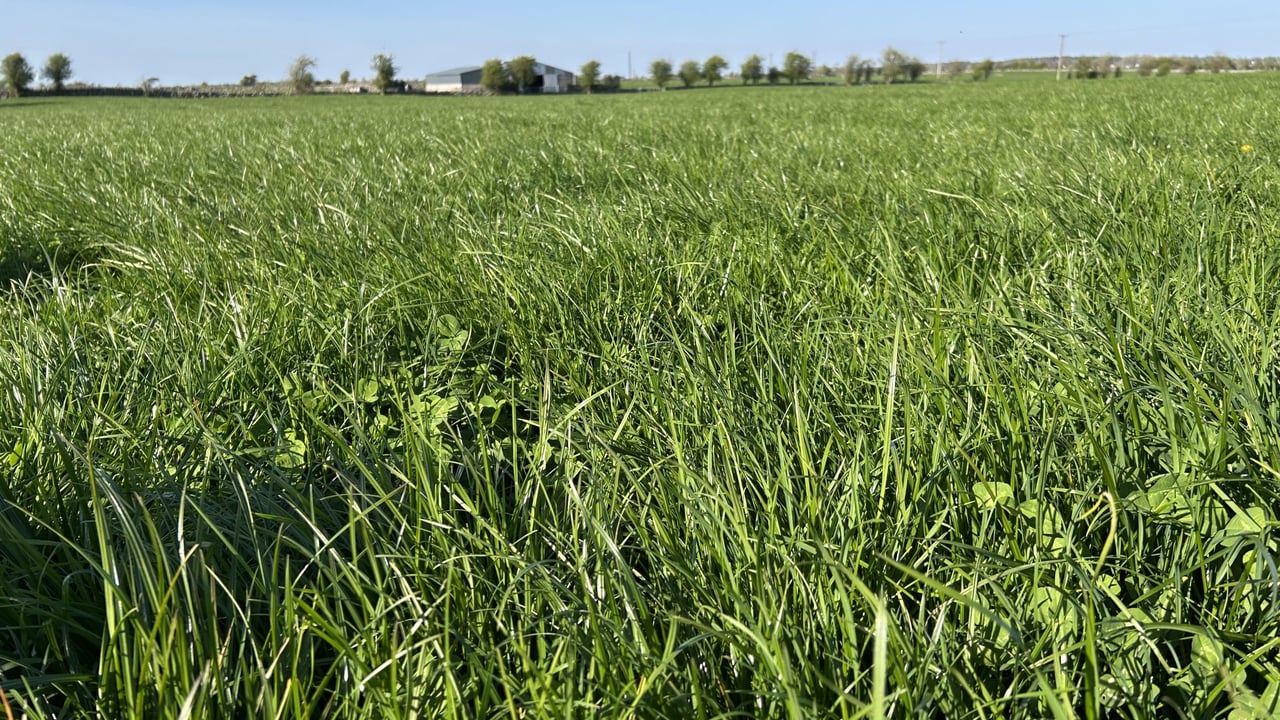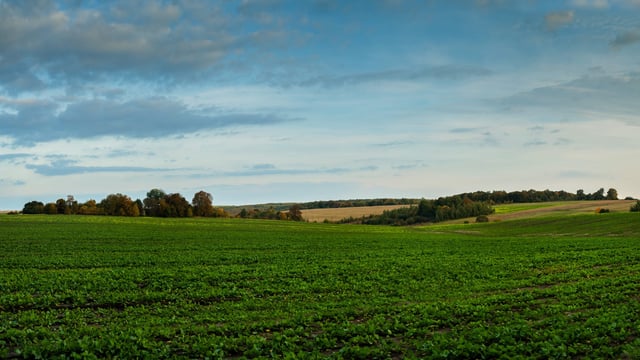Why farmers need to be aware that grass clover swards pose a threat at this time of year
A different strategy needs to be put in place for paddocks with decent clover content this autumn.
The focus at this time of the year is extending the grazing season and building average farm covers (AFC), but grass clover cannot be managed in the same way as grass alone.
Grass clover swards pose a threat at this time of the year, as the risk of bloat is very high, so farmers should try and avoid moving cows from grass paddocks to high clover content paddocks if at all possible.
To avoid bloat, avoid starving or running cows tight on a grass paddock before going to a high clover paddock. Aim for a post-grazing sward height of 4-4.5cm.
Identify high risk paddocks and monitor cows closely when they are grazing those paddocks, keeping a close eye during the high risk period.
In order to reduce the risk of bloat occurring, farmers need to be consistent, reemploy the strip wire when allocating grass, use bloat oil, include fibre in the diet and manage the grazing group to avoid gorging.
Holding cows back after milking is an option and sending the cows to the paddock all at the one time will ensure the first few batches that go out are not just selectively grazing and gorging on the lush clover.
Some farmers employ a 'breakfast break' where cows go to a grass allocation for an hour or two after milking, get a decent fill of grass and are then sent to the high clover paddock, where they cannot gorge.
Clover
There has been a surge of demand for more incorporation on Irish dairy farms, which has reduced many farmers' reliance on expensive chemical nitrogen (N), increased milk solids and improved nutrient balances on farms.
The uptake of grass clover swards has no doubt been a positive factor for farmers but unfortunately, in order to reap the rewards, it does require more work and better management.
Clover has to be treated differently, as your grass clover paddock needs to be closed at a different cover to your grass only swards.
Over the winter months, farmers aim to carry a heavy AFC, which in turn, allows for an early spring grazing, but a different strategy needs to be in place for grass-clover paddocks.
Where clover has been sown and is incorporated in paddocks, carrying a heavy cover over the winter will likely result in the plant dying out due to lack of light.
Farmers need to aim for a light AFC when it comes to clover paddocks to ensure the plants survival of the winter months.
To ensure this, the best thing to do, is to graze these paddocks late in the rotation, which may involve some planning for your autumn rotation.
A Teagasc study carried out from Sepetember 29, 2023 to October 31, 2024 examined the effects of autumn closing date and initial spring defoliation strategy on white clover persistence.
The study compared four autumn closing dates: September 29 (very high), October 16 (high), November 1 (medium) and November 14 (low). Two spring defoliation strategies were implemented – an early defoliation on February 14 and a late defoliation on March 19.
Two paddocks were used to conduct the trial, one with a clover content of 18% and one with a clover content of 41%.
The results from this showed that autumn closing date can have a significant impact on subsequent sward clover content, with a greater impact in swards with a lower clover content initially.
In high clover content swards, the later closing treatments also supported faster early-season white clover recovery; however, the earlier closing dates (very high and high) did recover to the required 20% clover content by June.
Paddocks
By ensuring these paddocks are closed off late in the rotation, these paddocks will have low covers during the winter months, which will allow light to continue to reach the bottom of the sward - keeping it alive and persistent for another season.
These paddocks can not be viewed in the same light as grass only paddocks, and these measures need to be implemented into your grazing targets and AFC targets for the remainder of the year.
It's easy to put a plan in place for managing clover, but when grass growth is stagnant and there is a struggle to build farm covers, this type of plan usually doesn't come into practice, however, it is something that farmers need to have in mind for ensuring quality grass and clover persistency next spring.





